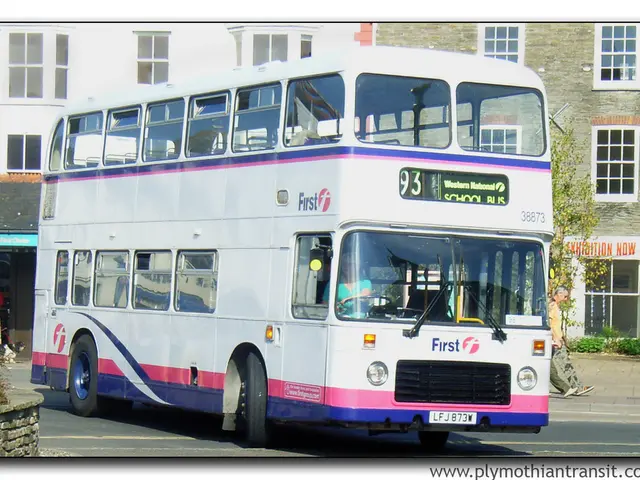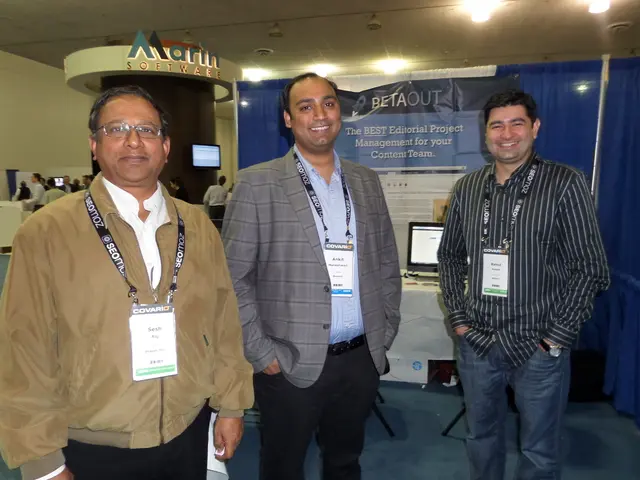Taxi robots emerge with the conclusion of Project HERON, marking a shift towards automated transportation.
The development and implementation of the Taxibot, a hybrid-electric ground tug, are progressing significantly, particularly as the HERON project concludes by the end of 2025. This innovative technology, designed to reduce an aircraft's ground fuel burn, emissions, and noise pollution, is poised to revolutionise airport operations worldwide.
## Emissions Reduction and Airbus' Commitment
At the heart of this transformation is the Taxibot, a pilot-controlled hybrid-electric tug developed by Israel Aerospace Industries (IAI). Airbus, a key player in the aviation industry, is committed to enhancing the Taxibot system. By 2026, Airbus plans to introduce a fully electric tug variant and develop a widebody model, signalling a significant step towards a greener aviation future [1][5].
## Integration and Training
To ensure a smooth transition, efforts are underway to integrate the Taxibot into airport operations more effectively. This includes training pilots and ground crews to use the system efficiently [1]. As the technology becomes more widespread, the need for this training will undoubtedly grow.
## Implementation Timeline
The HERON project, which includes Taxibot development, is set to conclude by December 2025 [3]. Following the project's completion, the focus will shift to scaling up Taxibot adoption across global fleets and integrating it into standard airport operations [1].
One airport leading this charge is Schiphol, which aims to achieve emissions-free status by 2030. As part of the HERON project, Schiphol Airport is involved in the broader efforts to decarbonize airport operations, though specific timelines for standardising Taxibot use at Schiphol are not detailed [1][3].
## Expected Impact
The widespread adoption of Taxibots is expected to significantly reduce emissions from ground operations at airports like Schiphol. By minimising the use of aircraft engines during taxiing, airports can also reduce noise pollution and improve operational efficiency [4].
Schiphol airport, with its long distances between some runways and terminals, is an ideal candidate for hybrid tug operations. The Taxibot can pull a single-aisle aircraft between a remote stand and the runway without using the aircraft's engines [7].
## Other Developments by HERON
HERON's 24 partners, including Airbus, Aéroports de Paris, Air France, Brussels Airport Company, easyJet, EUROCONTROL, Leonardo, Lufthansa, and Schiphol airport among others, are also focusing on other areas to further reduce emissions and improve efficiency. These include single engine taxiing and improved approach and runway operations to mitigate CO and noise emissions [8].
Adjustments to airport infrastructure are also being made to more efficiently connect and remove the tugs [8]. HERON is part of the Single European Sky ATM Research (SESAR) Joint Undertaking and aims to demonstrate how aviation's environmental footprint can be reduced through efficient ground operations and optimised air traffic management [8].
Trials of the Taxibot are taking place at various airports, including Amsterdam Schiphol, with plans for easyJet to conduct a trial later in 2025 at Schiphol airport [2]. Large-scale adoption of the Taxibot at Schiphol could result in ground fuel savings of around 50% [2].
In conclusion, while specific timelines for making Taxibot a standard procedure at airports like Schiphol are not provided, the ongoing development and integration efforts suggest a promising future for reducing emissions and noise in airport operations. The HERON project and the Taxibot are undoubtedly steps in the right direction towards a greener and more efficient aviation industry.
- In the aviation industry, Airbus is dedicated to improving the Taxibot system, planning to introduce a fully electric tug variant and a widebody model by 2026, positioning themselves for a greener future.
- As the HERON project concludes by the end of 2025, focus will shift to scaling up Taxibot adoption across global fleets, aiming to reduce emissions and improve efficiency in airport operations.
- With the widespread adoption of Taxibots, significant reductions in emissions from ground operations at airports like Schiphol are expected, also minimizing noise pollution and improving operational efficiency.
- The integration of Taxibots into airport operations, including pilot and ground crew training, will be crucial for ensuring a smooth transition and maximizing efficiency gains.
- In the real-estate sector, airports striving for sustainability, such as Schiphol aiming for emissions-free status by 2030, will likely benefit from investments in eco-friendly technology like the Taxibot, contributing to the housing market's green transition.
- In the broader context of environmental science and climate-change mitigation, advancements in renewable energy, such as electric tug variants, and data and cloud computing play a vital role in optimizing and Revolutionising airport operations, aligning with the goals of reducing emissions and improving the environment.




